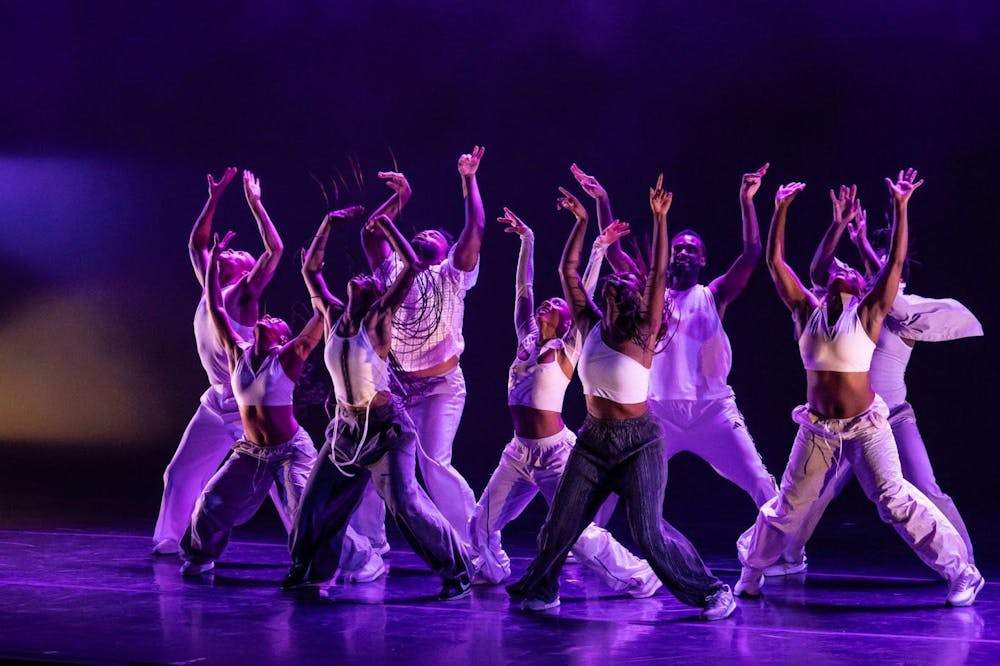As the lights dimmed in Matthews Theatre, a message over the loudspeakers encouraged the audience to “affirm what they see by vocalizing” and engage with the work as freely as the dancers onstage perform it. Unlike most contemporary dance performances, in which audience members remain silent out of respect, the audience took this message to heart and did not disappoint.
This semi-unusual request serves as the starting point for choreographer Camille A. Brown’s new work, “Camille A. Brown and Dancers: I AM,” which redefines the boundaries of contemporary dance while emphasizing Black joy and cultural liberation.
Before the show began, Lecturer in Dance Davalois Fearon and Mora-Amina Parker, the rehearsal director for Camille A. Brown & Dancers, Mora-Amina Parker, and first discussed the intricacies and focus of the show.
“[It’s] an opportunity for people to break the barrier between going to the theater and feeling that they don’t understand what they’re seeing, and giving people more elements to absorb the performance in a way that you know will resonate or will spark a light here that they didn't think about before,” said McCarter Director of Presented Programming Paula Abreu.
The discussion of “I AM” covered a variety of topics, but focused on the impact of the show, delving deeply into the show’s focus on highlighting black liberation and joy without displaying the historical pain of getting there. At one point during the discussion, an audience member praised the show’s goal to break the disconnect between audience and performer, stating she had never been given the invitation to feel something and express it.
On stage, dancers not only connected physically through executing identical dance moves, but emotionally as well. Through dap ups, hugs, and loving smiles, they exuded joy for the freedom they have been granted to dance proudly and authentically, and the audience could not resist getting in on the action.
Throughout the show, as the dancers executed advanced moves from a variety of styles ranging from ballet to hip hop, the audience was empowered to cheer freely, shouting out to dancers they knew and praising the impressive choreography with enthusiastic whoops and hollers. This jovial atmosphere created an intimate space within the theater where dancers’ performances were returned by vocalized gratitude, generating an energetic and artistic sense of reciprocity that was incredibly special to see in person.
Beyond choreography, the live music accompanying the dancers’ moves also stood out. Played by a three-piece band, the music drew influence from a variety of black musicians, including The Temptations, Mary J. Blige, and Busta Rhymes.
In one of the pieces, in which the dancers emulated the free movement of gospel church choir, the dancers were accompanied onstage by a live vocalist who brought the house down with his powerful cadence and intricate runs. His voice, accompanied by the music, seemingly possessed the dancers onstage as reflected through them, stretching their limbs freely as if they had no control over them. They clapped thunderously and stomped on the stage passionately, overcome by pure joy.
Isabella Rivera is a member of the Class of 2027 and a contributing writer for The Prospect at the ‘Prince.’ She can be reached at ir6143[at]princeton.edu.
Please send any corrections to corrections[at]dailyprincetonian.com.









